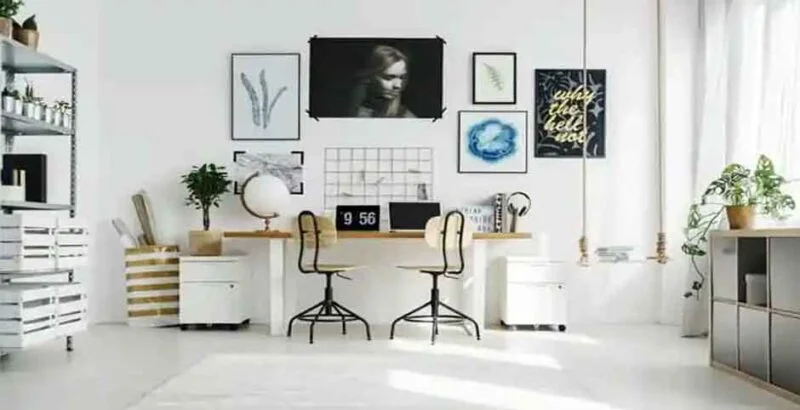
More people work from home than ever before, thanks to what can be somewhat described as a workplace revolution. Incentivised by unexpected constrictions brought about by the Covid pandemic, remote working possibilities have won over a considerable portion of the working population. This has brought home offices once again into the spotlight, as remote workers have the opportunity to completely redefine their working environment. As a remote worker, what might you do to plan your own dream office?
Choosing the Right Location
First things first, you’ll need to decide on a location for your home office. Since the sky’s the limit here, we can think beyond the basics. While the spare or ‘box’ room might be the path of least resistance for standard home office fare, these smaller spaces are not necessarily conducive to comfort and productivity advises www.francistaylorproperties.com.
Ideally, your office environment would avail of abundant natural light, and be naturally free of household noise. It is for this reason that outhouses have become popular options for at-home offices, where work is separated from the home by a garden ‘commute’ – which similarly reduces distractions from within the home. A durable timber structure could be the basis for a fully-featured office sun-room; building this from scratch would effectively allow you to choose your ideal floor-plan and footprint.
Personalised Workspace Design
On this subject, the design of your office space is crucial to its efficacy as an office space – and with complete free reign over the makeup of your space, if not its square footage, you can achieve any number of finished layouts that serve your individual needs. Not only does the layout need to service your requirements as a worker, but it should also reflect aspects of your personality in such a way that you can feel at home within it.
A key part of this process is de-cluttering. All too often, home offices become multi-purpose spaces that inherit awkward items and tasks from other parts of the house. In this way, offices have a dual role as spare bedroom or ancillary storage space, which can make for distracted working and discomfort in kind. As such, a concerted effort to define your office as a single-use space – and to de-clutter your home of items that might find their way into your office for the long run – can pay dividends.
Ergonomic Office Furniture
To a large extent, your office’s functionality and feel will be defined by the furniture you choose for it. While there are aesthetic considerations to bear in mind, ergonomics are the far more important factor. Assuming full-time hours, you’ll be spending upwards of six hours per day in your office – and risking musculoskeletal disorder where careful furniture choices are not made.
According to HSE guidelines for posture, the top of your screen should be at eye level and at arm’s length from you. Your keyboard should sit just below your elbow heigh, and your feet should be able to reach the floor comfortably. Ensuring your chair and desk match up height-wise is the simplest way to achieve this.
Tech and Connectivity
Finally, there will be some technological requirements to consider regarding your office. At the very least, you will need ample electrical outlets for ambient and task lighting as well as your computer and peripherals. Your office should also a strong internet connection, which may necessitate the running of a Cat-5 cable from your router to the office for guaranteed connectivity and speed. Past this, differing needs engender differing directions.

